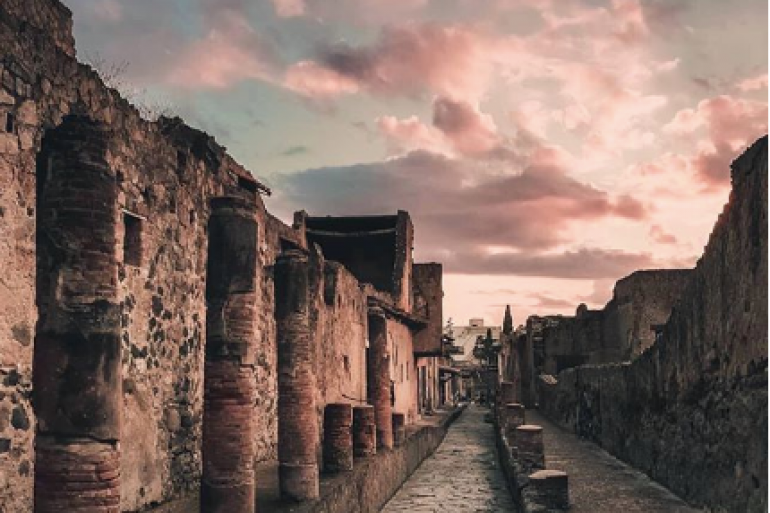


Born in the Archaic period and initially affected by an indigenous settlement, the city was subsequently exposed to Samnite, Greek, Etruscan influences, up to the predominant Roman presence, whose civilization is today testified by the exceptional state of conservation.

Situated on a volcanic plateau, overlooking the sea, Herculaneum, like the other Vesuvian cities, was covered by the eruption of Vesuvius in 79 AD. whose products, depositing themselves, buried it until it reached a thickness of twenty-three meters. The city was brought to light during the excavations conducted by the Bourbons, starting from a casual discovery made at the ancient theater of Herculaneum.

What remains of the ancient Bourbon tunnels testifies to an excavation technique, for parallel tunnels, now outdated but still very suggestive to observe. The excavations offer the visitor the opportunity to observe the urban fabric, the distribution of the houses, some of which are located in a scenic position facing the sea, the magnificent spa complex, the sumptuous gymnasium and the monumental basilica.

The perfect state of conservation of the woods, of the bronze parts and above all of the elevations of the houses, gives a complete picture both of the residential building, which allows us to reconstruct daily life and the way of living, and of the various styles of Vesuvian painting.

Archaeological excavations of Herculaneum
Address: Ercolano, Corso Resina, 1, Via Alveo
Phone: 081 857 5347
Site:
http://www.pompeiisites.org/Location inserted by
Annalisa Giordano